Introduction
Ireland was still part of the British Empire in the first decade of the 20th century, but a wave of nationalistic spirit was ensuring that any remaining loyalties to the crown were ebbing away by the year. This was the historical backdrop which accompanied those Irish men who elected to enlist in the British Army for service before or during The Great War of 1914. No doubt this was not an easy decision, but with this said it was paid service and employment and any decent prospects were scarce in many areas of our country at the time.
Unfortunately for those men who took that leap of faith, the Easter Rising of April 1916 would change the Irish landscape forever and those that made it back home alive faced a very different country, for many meaning a frosty and sometimes hostile reaction. What people sometimes forget is that many Irishmen who had enlisted pre-1916 ended up fighting against their own countrymen during and after the Rising, a pattern which would repeat itself during the Irish Civil War between 1921-22. So to say that these brave soldiers ended up between "a rock and a hard place" would be an understatement.
But of course many Irishmen did not make it back home alive and many more were grieviously injured and here we talk about some of the men from our own parish of Clashmore/Kinsalebeg who fought and died in World War I. The men listed here are based on the parish lists recorded on the "Waterford War Dead" memorial at St. John's Castle in Dungarvan, Co. Waterford which was unveiled in 2014.
1. Patrick Barnett - Service No. 22977, Private, 8th Bn, Royal Dublin Fusiliers
One of the most interesting of these characters was Patrick Barnett who fought with the 8th Battallion of Royal Dublin Fusiliers and was killed in action in France on May 19th, 1916. He is remembered at the Loos Memorial which forms part of the Dud Corner Cemetery of Pas de Calais, Northern France. His wouldn't have been a name you would associate with this area and indeed another Patrick Barnett of roughly the same age existed at the time from Chapel Lane, Lismore so it was first thought that this might have been an administrative error as Clashmore also has a Chapel Lane, but it turned out to be perfectly correct. As it transpired, Patrick Barnett was born to John and Kate Barnett, Greenland, Ardsallagh on March 7th, 1880 and had a sister Mary who was born in 1881.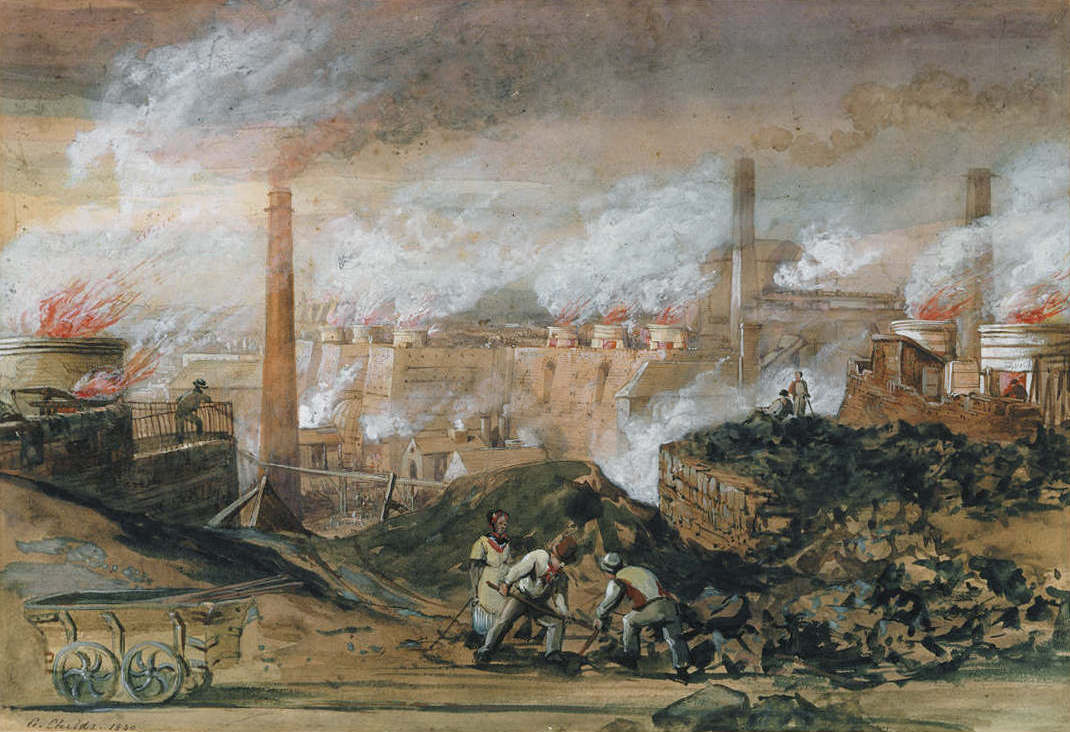 bUnusually Patrick actually enlisted at Merthyr Tydfil, Wales and was recorded on the bEngland & Wales Census of 1911 as being resident at Upper Merthyr Tydfil so it appears that he had emigrated some years earlier (possibly up to 10 years earlier as he didn't appearbon the Ireland 1901 Census). He is recorded as being employed as a steelworker at Guest &bKeen Steel Company of Dowlais, Merthry Tydfil which was a prosperous Ironworks factorybfounded in the mid-18th century and which still exists today. Also during this period, he married a Teresa O'Mahoney in 1906, after which they had a child Patrick Michael in 1909 and still lived with her family during this time, all of whom were also employed at the Ironworks. bUnusually Patrick actually enlisted at Merthyr Tydfil, Wales and was recorded on the bEngland & Wales Census of 1911 as being resident at Upper Merthyr Tydfil so it appears that he had emigrated some years earlier (possibly up to 10 years earlier as he didn't appearbon the Ireland 1901 Census). He is recorded as being employed as a steelworker at Guest &bKeen Steel Company of Dowlais, Merthry Tydfil which was a prosperous Ironworks factorybfounded in the mid-18th century and which still exists today. Also during this period, he married a Teresa O'Mahoney in 1906, after which they had a child Patrick Michael in 1909 and still lived with her family during this time, all of whom were also employed at the Ironworks.
Brief Summary of the Movements of the Royal Dublin Fusiliers during World War I:
1914 Sept: Formed as part of K2 and attached to 48th Brigade in 16th (Irish) Division.
1915: Moved to Buttevant, then in June 1915 to Ballyhooley.
1915 Sept: Moved to Blackdown, England
1915 Dec: Mobilized for war and landed at Havre and engaged in various actions on the Western Front.
1916 April: After arriving in France in December 1915 as part of the 48th Brigade in the 16th (Irish) Division, the 8th battalion were subject to a German gas attack at the Battle of Hulluch, near Loos, on 27 April 1916, suffering heavy casualties. The 8th battalion was in brigade support in Hulluch sub-section and the party under Lt. Lind was at work when the enemy blew a camoflet and the party was overcome by gas. 17 were killed and 11 gassed, a number of the casualties were a draft which had joined on the 28/03/1916. After this attack the 8th/9th battalions were removed from the line. Of the 2,128 casualties, about 538 were killed and many of the wounded died slowly from respiratory diseases. Also there had been trouble at home some days earlier in Dublin when the Easter Rising had taken place though, in spite of this, the Dublin Fusiliers still performed with dedication to their duty.
So it is likely that Patrick Barnett was involved in the Battle Of Hulluch and quite possible that he, along with many others, was wounded or gassed during this period and died later of his injuries.
2. John Hyde - Service No. 277751, Chief Stoker, H.M.S. Cornwall, Royal Navy
John Hyde of Ferrypoint followed a long line of navy men from the Kinsalebeg/Monatrea area, including the famed Edward 'Stoker' Lynch and many others. He can be considered extremely unfortunate as he was a long-serving navy man and almost survived the entire war, but tragically died of pnuemonia on June 22nd 1918 and is buried at the Liverpool (Anfield) Cemetery , Lancashire.
He had joined the Royal Naval Reserve on 5th September 1892 at the age of fourteen years, even though his year of birth on joining was given as 16th September 1873 but he was actually born on 3rd February 1877.
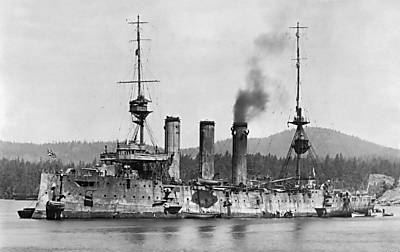 He spent most of the First World War period on the HMS Cornwall from Jan 1910 to Jun 1918, with the exception of a short period from Mar 1917 to Aug 1917 when he was back at the Devonport naval base. The ships he served on were the HMS Taman, Howe, Hyacinth, Flora, Emerald, Highflyer and Cornwall. He received the LSGC (Long Service Good Conduct) medal on the 2nd March 1909. This was also known as the "Traced Medal" and he received a traced pension from this. John Hyde had a total of almost twenty six years service between the Royal Naval Reserve and the Royal Navy from 1892 to 1918. He died of natural causes (pneumonia) according to naval records while based at Liverpool where the ship was being refitted. He was 41 years of age at the time and at that point held the rank of Chief Stoker. He spent most of the First World War period on the HMS Cornwall from Jan 1910 to Jun 1918, with the exception of a short period from Mar 1917 to Aug 1917 when he was back at the Devonport naval base. The ships he served on were the HMS Taman, Howe, Hyacinth, Flora, Emerald, Highflyer and Cornwall. He received the LSGC (Long Service Good Conduct) medal on the 2nd March 1909. This was also known as the "Traced Medal" and he received a traced pension from this. John Hyde had a total of almost twenty six years service between the Royal Naval Reserve and the Royal Navy from 1892 to 1918. He died of natural causes (pneumonia) according to naval records while based at Liverpool where the ship was being refitted. He was 41 years of age at the time and at that point held the rank of Chief Stoker.
He was a son of Michael and Mary Hyde, Ferrypoint and left behind him his wife Catherine (Kate) whom he had married in Nov 1899 and a daughter Annie who both lived at Grattan St, Youghal at the time of the 1911 Ireland Census .
It also must be mentioned that his brother Patrick Hyde also long-served in the British Navy with distinction and received his "Traced Medal" in 1917. He survived the war but unfortunately met his death accidentally from drowning while docked serving on the HMS Blenheim "Spear" in Malta on September 15th 1919. He is buried at the Malta (Capuccini) Naval Cemetery near Kalkara, Malta.
3. William Kett - G/19510, Private, 3rd Garrison Bn, Royal Irish Fusiliers (Prev. Royal Irish Regiment)
William Kett is a name which might be most familiar to the residents of Clashmore as he is buried in the Old Graveyard at the top of the village. He was born in 1868 to John and Mary Kett of Kilmaloo and worked 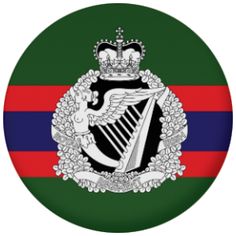 as a local labourer up to at least 1906 when he was working for a local famer Lawrence Kelleher, also of Kilmaloo. This was also the year in which he and Kate Shea, Clashmore were married by Fr. Edmond Hassett on the 28th July. He enlisted in the Royal Irish Regiment at Lismore but later served in the 3rd Reserve Battalion of the Royal Irish Fusiliers, from which he was invalided out of in 1917 and he is recorded as dying at home on May 3rd 1917. as a local labourer up to at least 1906 when he was working for a local famer Lawrence Kelleher, also of Kilmaloo. This was also the year in which he and Kate Shea, Clashmore were married by Fr. Edmond Hassett on the 28th July. He enlisted in the Royal Irish Regiment at Lismore but later served in the 3rd Reserve Battalion of the Royal Irish Fusiliers, from which he was invalided out of in 1917 and he is recorded as dying at home on May 3rd 1917.
Brief Summary of the movements of the 3rd (Reserve) Garrison Battalion:
Dec 1916: Formed at Dublin.
April 1917: Moved to Bere Island, Bantry Bay.
May 1918: Moved to Seaton Carew, Hartlepool and then Greatham.
Oct 1918: Moved to Castle Eden, west Hartlepool.
It is likely that Private Kett had been injured previously in service of the Royal Irish Regiment and was transferred back to the 3rd Reserve Battalion in Ireland during his covalesence.
4. Michael Fitzgerald - Private, 7556, 1st Bn., Irish Guards
Michael Fitzgerald was also from Kilmaloo (West) and was born c. 1892 to Michael and Kate Fitzgerald (Tobin) and would most likely have known the aforementioned William Kett.
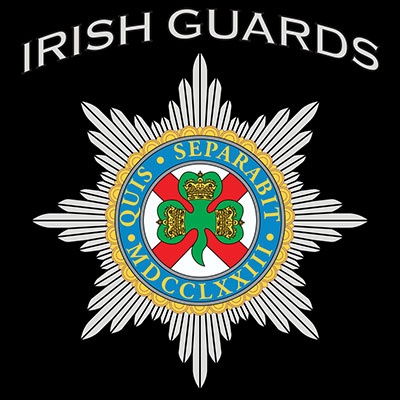
Brief Summary of the movement of the Irish Guards – 1st Battalion
1914 Aug 4th: Stationed at Wellington Barracks as part of the 4th (Guards) Brigade of the 2nd Division.
1914 Aug 13th: Mobilized for war and landed at Le Havre and engaged in various actions on the Western front
1914: The Battle of Mons and the subsequent retreat, The Battle of the Marne, The Battle of the Aisne, First Battle of Ypres.
1915: Winter Operations 1914-15, The Battle of Festubert.
1915 Aug 20th: Transferred to the 1st (Guards) Brigade.
1915 Sep 25th: The Battle of Loos (25 September – 13 October 1915)
As part of the 1st Battalion of the Irish Guards, Michael Fitzgerald would ultimately have fought in the Battle of Loos which took place between September 25th and October 13th, where he may well have been greviously injured as he died a week later on October 20th 1915. He is buried at Lillers Communal Cemetery at Pas De Calais, Northern France.
If anyone has further information about these men or indeed any war survivors please contact us at the link below...
Back to Articles 
|
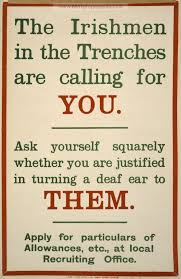
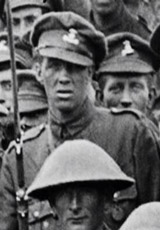



 as a local labourer up to at least 1906 when he was working for a local famer Lawrence Kelleher, also of Kilmaloo. This was also the year in which he and Kate Shea, Clashmore were married by Fr. Edmond Hassett on the 28th July. He enlisted in the Royal Irish Regiment at Lismore but later served in the 3rd Reserve Battalion of the Royal Irish Fusiliers, from which he was invalided out of in 1917 and he is recorded as dying at home on May 3rd 1917.
as a local labourer up to at least 1906 when he was working for a local famer Lawrence Kelleher, also of Kilmaloo. This was also the year in which he and Kate Shea, Clashmore were married by Fr. Edmond Hassett on the 28th July. He enlisted in the Royal Irish Regiment at Lismore but later served in the 3rd Reserve Battalion of the Royal Irish Fusiliers, from which he was invalided out of in 1917 and he is recorded as dying at home on May 3rd 1917. 
